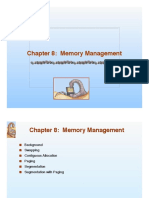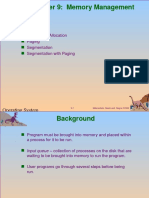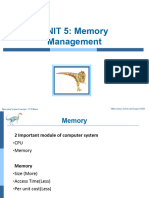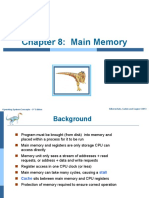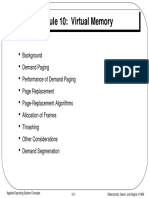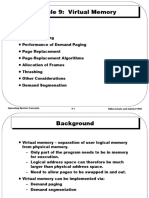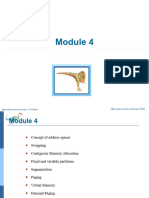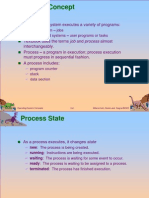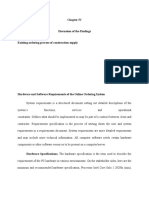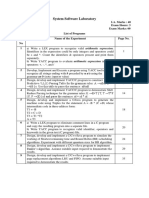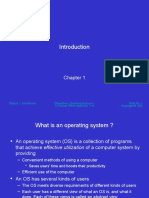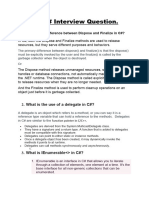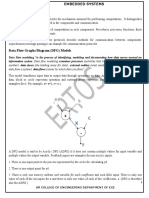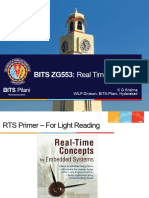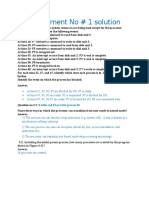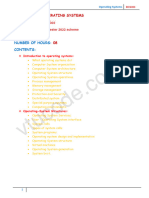0% found this document useful (0 votes)
46 views30 pagesChapter 3
The document discusses memory management techniques in operating systems, including basic memory management, swapping, partitioning with both fixed and dynamic allocation, and virtual memory using demand paging. It provides details on page replacement algorithms like FIFO and optimal page replacement.
Uploaded by
binakasehun2026Copyright
© © All Rights Reserved
We take content rights seriously. If you suspect this is your content, claim it here.
Available Formats
Download as PDF, TXT or read online on Scribd
0% found this document useful (0 votes)
46 views30 pagesChapter 3
The document discusses memory management techniques in operating systems, including basic memory management, swapping, partitioning with both fixed and dynamic allocation, and virtual memory using demand paging. It provides details on page replacement algorithms like FIFO and optimal page replacement.
Uploaded by
binakasehun2026Copyright
© © All Rights Reserved
We take content rights seriously. If you suspect this is your content, claim it here.
Available Formats
Download as PDF, TXT or read online on Scribd
/ 30





